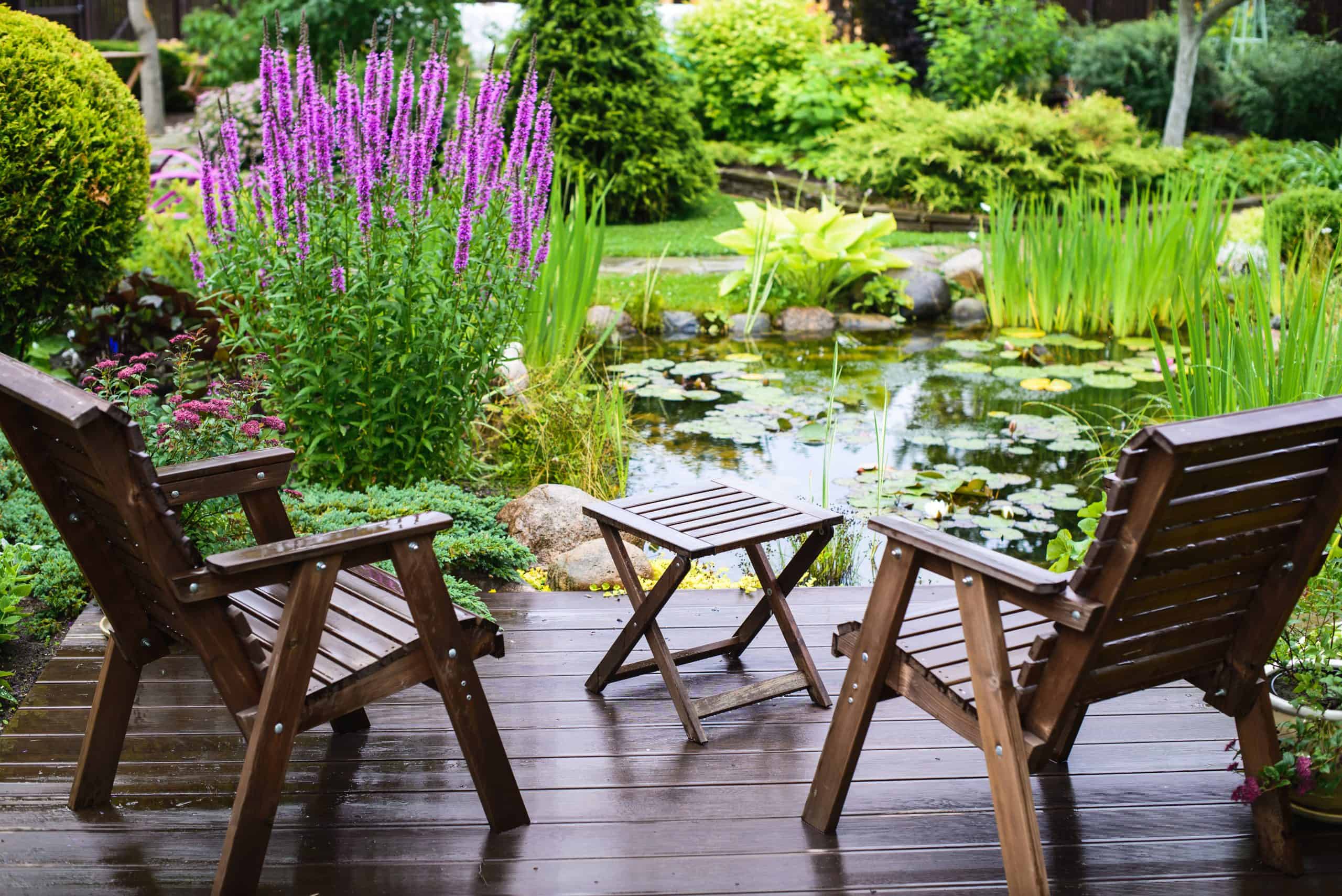
A garden pond is a beautiful way to add variety to a space. The decor of the garden is also changed by appropriate plantings. Decorative reservoir can be created by ourselves.
Pond is a dream of many owners of plots and home gardens. If we build them on our land, we can freely choose the place and determine the size of the tank. If we are allotment owners, the regulations on the possibility of building anything are set out by the internal rules of ROD.
The pond must be located in a sunny place. Aquatic and coastal plants and fish need about 6 hours of sunlight every day.
However, the pond should not be located in a completely exposed area. Excessive sun exposure will cause the water temperature to rise too high, scorching the plants and causing algae to form. So it is good to choose a place which will be partially shaded
Remember, however, that locating the pond near trees and shrubs, which shed a lot, will require regular cleaning of the leaves.
There is no point in building a very small pond. The effort we put into its preparation will not bring a measurable effect. Firstly, it will get lost in the garden and secondly, the small pond will quickly become overgrown due to expansive water plants
The optimum size for a pond is around 20 m² and at least one metre deep. If you nevertheless want to create a pocket-sized pond in your garden, it’s better to choose a mini pond from a ready-made plastic mold. Dig such a tub into the ground and arrange it according to your own taste.
When we have chosen a suitable place and decided on the size of the pond, we move on to the field work. The first step is to mark out the borders of the future pond, including the strip of shoreline plants. We mark the area, for example, with a string. The hardest stage of work is before us – digging the tank.
Digging a pond we simultaneously model the area that will be flooded with water. The optimal solution is to dig 2 or 3 steps around the target deep basin. This will be the space prepared for planting. A depth of 5-15 cm is suitable for shallow zone plants (marsh marigolds, swamp marigolds, rushes). A depth of 35-40 cm is the zone of plants that like medium depth (water irises, water clubs and arrows). The deepest, about 60-70 cm below the surface of the water, water lilies are planted.
The bottom of the tank should be dug a little deeper than the target depth of the pond. Then we thoroughly clean the tank from stones, roots, glass and other elements that can potentially damage the foil. We protect the bottom of the tank with a layer of sand.
To protect the pond we use a specialized foil. EPDM geomembrane, gardenmata or other dedicated pond liners are best for this purpose. Choose solid foil that is resistant to frost, chemicals, rodents and abrasion.
The foil should tightly cover all the floors of the pond. It should be laid evenly and carefully. The strip that goes beyond the frame of the mesh – to the edge – should be as wide as possible. Carefully secure it against rolling and slipping.
The next stage of creating the pond is planting water plants, letting the water run and observing the construction. This is the time for possible corrections, catching structural damage and quick reaction.
When we are sure that the pond is tight and does not require any structural corrections, we move on to its arrangement. We decorate the protruding foil with stones and plants. We plant the plants around the container. Arrange the space so that the pond looks as natural as possible. We can also think about letting the fish in.
To modern solutions in the field of domestic water reservoirs belongs the swimming pond. It is an ecological pond that combines the function of a pond and a pool where you can swim. The arrangement of the swimming pond depends only on us. We can decide on a pond that looks like a natural reservoir or construction more similar to the modern swimming pool.
How is it possible that the water in the tank is suitable for swimming, and therefore clean, when on the other hand plants grow in it? Does this really happen without having to add chemicals? Yes. The reservoir consists of two parts: swimming and regeneration. The former can be used for recreation. In the second part it is important to build a tank and make appropriate plantings. They are responsible for the filtration of the pond water.
Main photo: Nadeza Verbenko/Adobe Stock